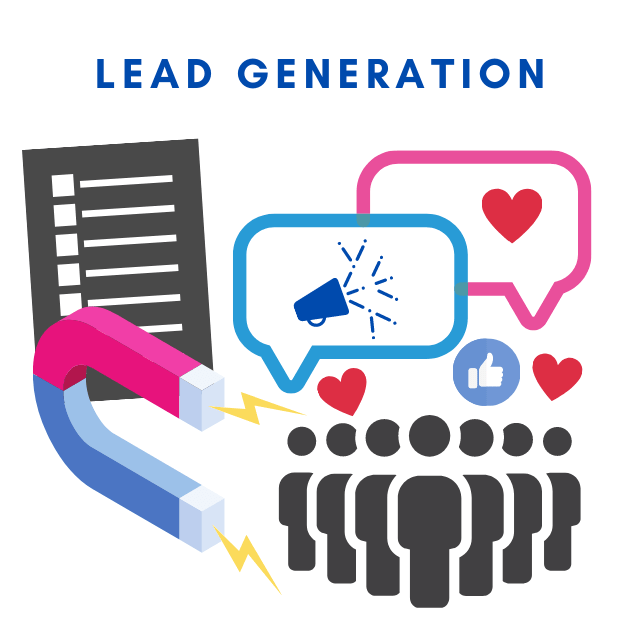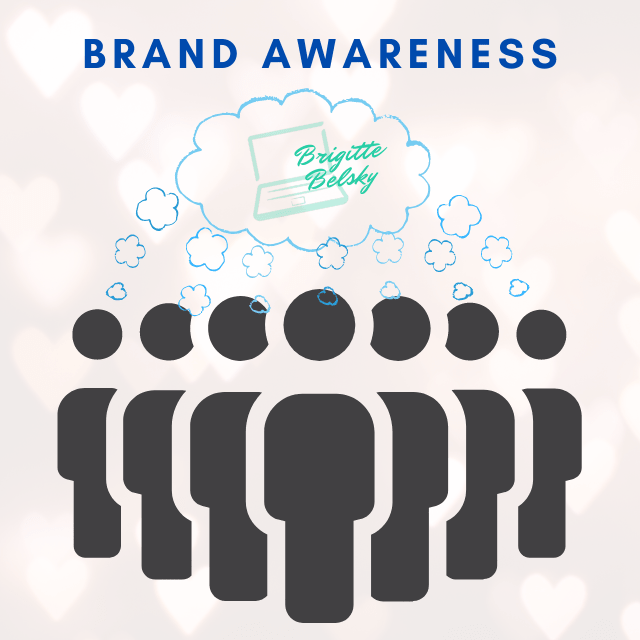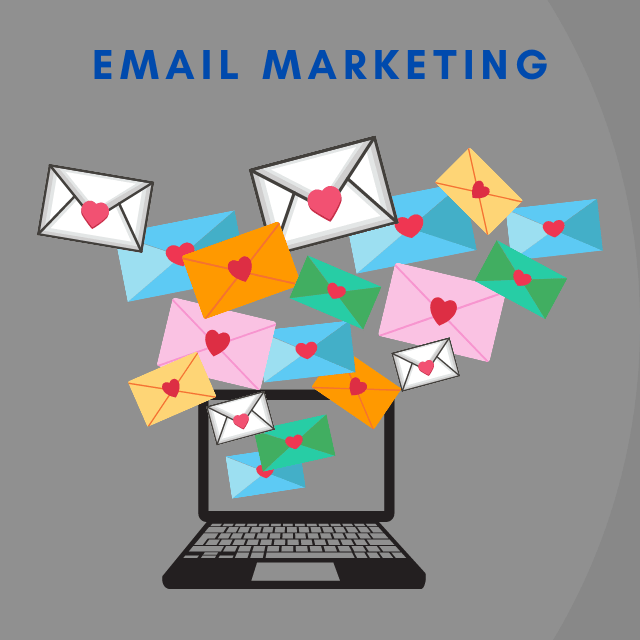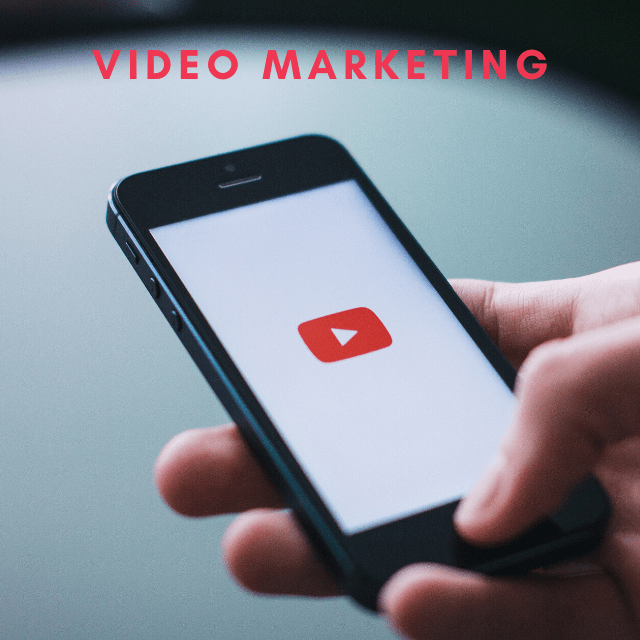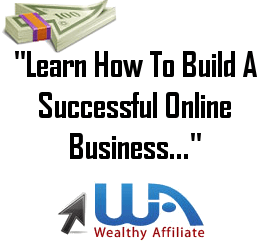What is Internet Marketing? Beginners Guide to Today’s Online Marketing & Strategies
This site is supported by its audience. When you purchase through links on this site, I may earn an affiliate commission at no additional cost to you. Thank You! Learn more on my disclaimer page.
What is Internet Marketing?
Beginners Guide to Today’s Online Marketing & Strategies
In this beginners guide you will learn What is Internet Marketing?, how it applies to Today’s Online Marketing and be aware of strategies used.
We will cover Internet Marketing Methods, Internet Lead Generation and Internet Marketing Tools. Ending with the Battle Plan so you can implement your chosen strategy today.
Scroll down or use these quick links to your desired section
Let’s begin …
What is Internet Marketing?
Let’s break it down …
“Internet” is simply defined as:
The “Internet” is a global electronic network. Making accessible a variety of digital information and communication facilities to an end user with the appropriate connection.
“Marketing” is simply defined as:
“Marketing” is the activity of promoting and selling products or services, including market research and advertising.
The term “internet marketing” has become associated with a broad range of topics in recent years.
For many, it literally means just what it says: “marketing on the internet”. Which is also seen as synonymous with “digital marketing” and “online marketing”.
For others, it has become associated more specifically with the worlds of affiliate marketing, information products, and the ‘make money online’ niche.
For our purposes, we’ll lean more towards the former and will settle on the following definition:
Internet marketing is the use of internet properties* and traffic* to generate leads, sales, or brand awareness. This is typically done via search engine visibility, social media marketing, email marketing, and various forms of paid advertising.
* internet property = a point of presence (e.g. a website, social media account, blog, etc.) on the web
* traffic = visitors to an internet property. A common way to measure the effectiveness at attracting an audience by an online business
One of the best ways to begin understanding “internet marketing” is to break down the various goals a business is looking to accomplish with it. The ultimate end goal of marketing is, of course, revenue.
With that in mind, we can definitely classify sales as a primary goal of internet marketing. Many businesses do focus on sending traffic directly to paid offers, in other words a sales page.
However, for many businesses sales remain a distant long term goal, unless their traffic are hot buyers for their offer.
A more common immediate or short-term goal of internet marketing, however, is lead generation.
The point of lead generation is to have a list of prospective buyers that are interested in what the online business has to offer. This list is then instantly available, which is then nurtured for free (or close to free) & a ‘know, like & trust’ relationship can be created.
From that point forward the expectation is that multiple future sales will happen from that potential customer. This in turn increases the average lifetime value of each lead, resulting in a greater long-term ROI (Return On Investment) from each dollar spent on marketing either in time or money.
Lead generation for an online business might consist simply of building an email list, perhaps with customer names associated as well.
Lead generation for an eCommerce business or local “offline” business might also include physical mailing addresses and phone numbers so they can follow up in other ways such as telemarketing or mailing out catalogues and special offers.
Other businesses might pursue even more robust lead data such as business information like industry categories or number of employees in the case of B2B (Business to Business) marketing, or income ranges and family size in the case of higher-ticket B2C (Business to Customer) models like insurance sales or real-estate.
Since lead generation is often seen as the most common and multi-faceted immediate goal of internet marketing, a whole section below is devoted to the various methods and forms of lead generation.
Finally, another immediate goal of internet marketing is growing brand awareness and familiarity.
For many businesses, this might consist of spending large amounts on banner advertisements or video ads primarily for the purpose of getting their brand name, logo, or USP (Unique Selling Proposition) in front of as many eyes as possible as many times as possible.
The idea here is to increase top-of-mind awareness so that the potential customer will think of the brand in future situations when they need that specific need fulfilled.
For example, when a fast food chain airs ads on television, it’s not because they expect people to immediately hop in the car and go buy a burger because of it. It’s because they want you to think of their restaurant next time you clock-out for your lunch break and are deciding what to eat.
The internet marketing equivalent of this might be an online tax service heavily investing in banner ads and video ads in December and January, not because they think people will suddenly start doing their taxes early, but because in April when 90% of Americans do their taxes at the last minute, their brand will be the first one they remember.
Other forms of brand awareness might simply consist of frequent social media posting. Businesses know that constantly seeing their brand image in their followers’ newsfeeds or Twitter feeds accomplishes that same top-of-mind awareness as well as other emotional associations with their brand such as loyalty, pride, good will, and humour (covered in more detail in the Internet Marketing Methods section below).
Internet Marketing Methods
Regardless of whether your intended destination for traffic is a sales page, a lead page, or simply a piece of content, the potential internet marketing methods are manifold. We’ll cover the most common ones here.
Email Marketing
Email marketing is unique in this list for a very obvious reason: you already have their email address. In other words, the main goal of email marketing is nurturing & sales, whereas the other methods in this list can have both sales and lead generation as a goal.
Email marketing basically consists of sending nurturing & promotional email messages to a list of leads, typically using an autoresponder service like GetResponse or Aweber.
Email marketing can be done on a completely manual basis by sending out newsletters, messages or offers instantly. Or on an automatic basis, in which a list of leads are put through a sequence of pre-planned auto-responder messages.
More recently, the concept of marketing automation has become popular. This is where leads are put through a unique series of autoresponder sequences that change and adapt based on the actions of the lead and various “if this then that” (IFTTT) conditions established by the marketer.
For example, if a lead does not open an email, they might be automatically sent a follow-up email asking why they hadn’t opened the previous one, or if a lead clicks on a certain link in an email which indicates they have a particular interest, they might be segmented into a separate list or new sequence that caters to that specific interest.
SEM
Search Engine Marketing (SEM) consists of leveraging a search engine’s paid advertising platform to position your business as a “sponsored” search result in a prominent, visible place on Search Engine Results Pages (SERPs). The most popular search engines for SEM at the moment are Google and Bing.
A business can setup their ad to target a group of keywords* that they’d like to “rank” for, as well as selecting other variables such as demographics and location. These ads will then appear at the top or bottom of the SERPs (depending on various factors such as budget and bidding) and will have the appearance of a typical search result, with the one exception of a small word like “ad” or “sponsored” somewhere on it (this varies among search engines).
* keywords = search terms (words) users type in their browser
SEO
Search Engine Optimization (SEO) is the use of various on-site and off-site practices and factors to make your web properties rank higher in search results.
It’s the process of optimizing your website to get organic*, or free, traffic from the search engine results page.
These practices include methods like keyword usage, original content, frequent updating/posting, backlinking*, social sharing, bounce rates*, visitors’ average time on a site, and the use of images and videos.
* organic = visitors coming from a search engine, such as Google or Bing
* backlinking = are links on one website that, when clicked, takes the user to another site. Also known as ‘incoming links’ or ‘inbound links’
* bounce rates = how many people leave after viewing just one page
Ad networks
Ad networks are another way to get your brand or offer in front of your target audience on a broad range of web properties. The most commonly discussed ad network is Google’s AdWords network but there are several others out there.
Using these networks you are placing an ad on a variety of websites through their service. These ads can be in the form of banner image ads, video ads, or simple textual ads.
This approach can be especially powerful when combined with retargeting. This entails placing retargeting pixels on your web properties and then specifically targeting your site visitors via ad networks so that the offer they initially looked at (and are presumably interested in) starts following them around the internet wherever they go.
This may sound creepy, but statistics indicate that people who are retargeted are 70% more likely to convert! You’ve probably already noticed this as you are surfing the net.
Individual Sites
Some marketers might prefer to do their advertising on a case-by-case basis. They do this by personally approaching individual, relevant websites, forums, or blogs in their niche or industry.
Naturally you’ll want to display your ad in places with a reasonable level of traffic and a positive reputation to ensure your advertising dollars are spent well. So be sure to research the metrics of the given site, blog, or forum. You can learn a lot about websites by researching them on Alexa.
That said, the majority of businesses tend to find the use of ad networks to be a more cost-effective way of advertising.
Social Media Marketing
Social media marketing has come a long way in the last several years and has changed the way many businesses think about marketing in general.
For some marketers, social followers have replaced email addresses, posts and tweets have replaced promotional emails, and likes have replaced email opens.
Word of warning: Personally I wouldn’t recommend replacing those elements, rather add them to your overall internet marketing strategies.
Why? … I have seen several instances of marketers losing their business overnight because that social platform has for whatever reason just closed their account & getting it re-opened is near impossible.
Virtually every successful business today has not only a social media presence, but a clearly defined social media strategy. Most of these strategies revolve around posting consistent content.
But it’s more than just posting promotions and offers.
A successful social strategy will include various types of non-promotional content for various types of goals.
- Posting about trendy topics makes your brand seem relevant.
- Posting about a charitable cause associates your brand with feelings of goodwill.
- Posting useful tips without a sales pitch makes your business come off as genuinely helpful.
- Posting humorous or “feel-good” content associates your business with positive emotions, and so on
But more importantly, these types of non-promotional posts are accomplishing two other goals.
- First, they’re encouraging social sharing, which grows your following even more.
- Secondly, they’re creating top-of-mind awareness for your brand.
People will get used to seeing your content and your business name, logo, and USP. As a result, when they have a problem that your business fixes, they’ll be more likely to think of you first.
All of those social media concepts revolve around organic activity. However, the major social media platforms today have also developed robust paid advertising systems.
The most game-changing of these has been the concept of social “native advertising”. Native advertising refers to advertisements that have the appearance of organic content with the exception of a tiny one-word disclaimer somewhere designating it as “sponsored” or an “advertisement”.
These native ads act and function just like organic content (they can be shared, liked, etc.) and businesses now have the ability to pay to promote an organic post to give it further reach.
This new form of paid social media advertising has proven to be remarkably effective because social media consumers are already in the habit of looking at, consuming, and engaging with anything that looks like an organic post in their social feeds.
Video Marketing
If there’s one thing that has been well established in marketing today, it’s the tremendous power of video. Nothing else compares. Understandably then, marketers have seized on video and are leveraging it in numerous ways.
Businesses are publishing video content on multiple video sites such as YouTube, DailyMotion, and Vimeo just as they would publish non-video content to Facebook or Twitter. And to increase exposure they cross-promote them on social media platforms too.
As with the social media strategy described earlier, a successful video content strategy includes a good mix of useful, helpful, trending, humorous, and “feel-good” video content, with “salesy” videos being in the minority.
Another recent development is that major social networks like Facebook and Twitter have added their own video uploading and streaming functions, increasing the overlap between video marketing and social media marketing.
One further angle on video marketing is paid video advertising. Presently, the most popular version of this is YouTube/AdWords video ads which appear at the beginning of videos on both YouTube as well as other video-playing properties around the web. These video ads can typically be skipped after several seconds.
In addition to the YouTube/AdWords video ad network, businesses also often pay for video ads on an individual basis on other websites, news sites, and so on.
Content Marketing
Content marketing is largely included in the other marketing methods mentioned thus far, but it’s also worth discussing by itself.
The most common forms of content marketing are blog posts, news articles, and social posting, but content marketing can also include video and image publishing. The goals of content marketing are manifold.
- Firstly, it builds goodwill with followers who associate your brand with helpful content.
- Secondly, content marketing provides an opportunity to hide a “soft pitch” within “non-salesy” content which can lead to sales while at the same time providing useful content.
- Thirdly, content marketing can be an excellent way to “pixel” an audience for later retargeting which has proven to be a really effective tactic.
- Finally, content is the primary driver in most search engines’ algorithms which can result in higher rankings.
There are many benefits beyond these four, but these can be considered the most relevant and directly impactful ones.
Old School Methods
Backlinking use to be highly promoted as a means to rank highly on the Search Engines.
The idea was to go mass-post comments with a link to your web property anywhere that allowed commenting, such as blogs, forums, video channels, etc…
This was extremely abused by not leaving meaningful comments related to the post, and/or the link itself going to rubbish content. So it became spam mayhem!
Some still promote it as a way to do business, however, search engines have become wise and have changed their algorithm to penalize abusers of this tactic. Definitely do not mass-post comments for the sake of backlinking as that will likely kill your SEO.
Some of these platforms where you can comment do allow you to have a signature. That would be the place to have your backlink. Do check first.
Blog, forum, video commenting without leaving a backlink is still an effective way to get your brand in front of relevant audiences & make new connections. By leaving non-spammy but sincere, relevant, useful, helpful contributions to the conversation on a regular basis that audience will get to know, like & trust you. This creates top-of-mind awareness for your brand, keeps your reputation intact & they will come to you.
Internet Lead Generation
Most of the above marketing methods have the same immediate goal in mind:
Getting traffic to a web page.
This web page could be either a sales/order page or a lead generation page.
Since sales is a relatively straightforward topic and lead generation is at the forefront of immediate internet marketing goals, we’ll now be focusing on all the variations of lead generation.
Email List Building
At the top of the lead generation is email list building.
They say “the money is in the list” and it’s true but it’s not the whole story.
If you have a list of say 1000 leads purchased from some provider the chances are most of those emails are junk or fake emails. Your emails will bounce or won’t get opened because the owners of those email addresses don’t know you and very possibly have no interest in what you have to offer. This will hurt your email marketing efforts as that may cause your email address to be blacklisted & always land in peoples spam folder. This will not result in Sales. It will just cost you money!
The best email list to have is one of people who are truly interested in what your business has to offer. Rather have a list of 100 who look forward to receiving your emails, opens them, views your offers & buys your offers.
The most common method of email list building is to send traffic to a lead generation page of some sort. Typically, this is a landing page pitching some sort of free offer or “lead magnet” with an opt-in form. The visitor will type their details into the opt-in form in exchange for the offer.
It’s best to keep your opt-in form simple, don’t ask your visitor to give you too much information or else they may not bother. That’s why you may have seen opt-in forms just asking for an email address.
Better yet, is to ask for at least a first name & email address. Having their name will enable you to personalise the email to them, which can automatically be done with the autoresponder you’re using. Personalized emails are known to increase open rates by around 30%.
What’s better:
‘Hi jsmith@gmail.com’ or ‘Hi Jane’ ???
Personally I can’t stand receiving emails that address me by my email address, I much prefer my first name – how about you?
For a long time now there has been a trend where visitors have a ‘junk email address’ which they rarely look at & use to get access to offers or even put in a ‘fake email address’.
To increase the quality of the contact information you collect let your visitor know that the only way they can receive the offer is by checking their email for the access link.
Another way to increase the quality is by using a prefill tool such as that available on Facebook and Twitter’s advertising platforms. They’re known as “lead ad” or “lead card”. What this does is it pre-fills the opt-in form, using the Facebook or Twitter users’ name and email, and requires the visitor to only tap the submit button.
This is beneficial because the emails and names associated with a person’s social media account are more likely to be real and regularly checked. Visitors can still choose to click on and change the auto filled data in those fields if they don’t wish to use their social media information.
Robust Lead Generation
Some businesses require more lead data, for example to get a quote of some kind.
This more robust lead collection approach simply entails adding more fields to an opt-in form. Depending on the business’ needs, this may include fields for: a phone number, mailing address, business name, industry, income level, family size, and so on.
SMS List Building
SMS stands for Short Message Service, better known as Text Messaging.
Text Message Marketing has become increasingly popular in recent years. There are various ways of conducting this type of list building.
Initially, the main use of SMS list building was for major retailers to send out special coupons and promotional messages.
However, more recently, many online businesses have been leveraging SMS messaging for things such as webinar reminders and sales promotions. Having people input their mobile numbers or having them send a text message to a special number.
Push Notifications
An even more recent trend has been to have people opt in to push notifications. This involves a pop-up on your website requesting permission to send people future updates directly via their browsers.
When a person consents to this, you are then able to send notifications that pop up in a box on the bottom right of their screen at any time in the future.
Retargeting
We mentioned retargeting above in the “Ad Networks” section.
Building a retargeting audience can be considered another form of lead generation list building and is relatively easy to do. Various platforms including AdRoll, Facebook, Twitter, and many others have a retargeting pixel that you can paste onto your web properties.
Once this is done, all traffic to these pages will be cookied and added to your retargeting list. From that point forward, you’ll have the ability to place your ads in front of these people almost anywhere on the web. This includes on social platforms like Facebook, Twitter, and Instagram, video sites like YouTube, and virtually any website, news site, blog, or forum that participates in any of the major online ad networks.
This is a very valuable form of lead generation because retargeted traffic has been shown to convert at a 70% higher rate than cold traffic.
Social Followers
Finally, building a social following can be considered another form of lead generation.
By following the strategies discussed in “Social media marketing” above you can create a large social following. This will allow your content and promotions to be seen in the social feeds of countless potential customers. The possibility of these followers sharing these posts gives your business yet another way to expand your list even further.
If your audience is large enough, social posting remains a powerful form of marketing today. Despite social networks, like Facebook, who have decreased the percentage of a business’ audience that will see organic posts in their social feeds.
Internet Marketing Tools
Regardless of which method of lead generation you focus on, your business will need several tools to generate leads. There are so many options available in each category. At the end of the day you need to choose what will work best for you. When starting out it’s best to keep things as simple & minimal as possible, and that includes the tools you use.
If you already use any tools for the below categories, please share them with us below in the comment section & tell us what you like & don’t like about it. Thanks ![]()
Below I have listed tools that appear to be the most popular amongst online marketers to give you an idea. I have not checked many of them as they are not relevant for me at this time. Do do your own due diligence.
EMail List Building Tools include:
For email list building, you’ll require a minimum of two tools: an autoresponder and a landing page builder.
- Your autoresponder will be the platform where your email list is managed, ie: sent, stored, and communicated with.
- Your landing page builder, on the other hand, will be where you place your opt-in forms and collect your leads.
Autoresponders include:
> Active Campaign
> Aweber
> Constant Contact
> GetResponse
> MailChimp
> SendReach
Landing Page Builders include:
> ClickFunnels
> InstaPage
> LeadPages
> InstaBuilder
> OptimizePress
> Thrive Themes
For businesses that require more robust lead generation data, this can usually be done with the above-mentioned autoresponders and landing page builders. However, for more flexible and wide ranging forms, a business might find that a service like FormSite.com, Wufoo, or Formstack will fill their needs better.
SMS List Building Tools include:
> TextDeliver
> Trumpia
> Twilio
Push-notifications Tools include:
> PushCrew
> Push Connect Notify
> OneSignal
Retargeting Platforms include:
> Facebook
> Twitter
> Google AdWords
> AdRoll
> Perfect Audience
Social Media Management Tools include:
Finally, social media marketing can easily be done via the various social platforms themselves. However, many marketers prefer to use social media automation management tools such as:
> HootSuite
> OnlyWire
> Sprout Social
Battle Plan
Well done for getting through this guide.
You should now have a good understanding of “What is Internet Marketing?”
But guess what?
Everything you’ve learned here doesn’t count for anything if you don’t immediately start applying it. If you’re a beginner I don’t recommend going the ad route, costs can spiral without much return. First learn & build on the free lead generation options.
Have a look at the battle plan below and start implementing these steps today.
Step 1: Determine your most important internet marketing goal for right now. Eg: Lead Generation
Step 2: Choose 2 marketing methods to focus on for right now. Eg: Email & Facebook
Step 3: Acquire the necessary tools to employ those methods. Eg: Autoresponder
Step 4: Create the content you need for your chosen strategy. Eg: Facebook Post & Free Offer
Step 5: Start implementing your internet marketing strategy immediately.
In summary…
What is Internet Marketing?
Internet marketing is the use of internet properties and traffic to generate leads, sales, or brand awareness. This is typically done via search engine visibility, social media marketing, email marketing, and various forms of paid advertising.
The top internet marketing strategies today are…
Email Marketing:
Using an autoresponder service to send out promotional emails or automated sequences in order to drive sales.
SEM:
Paying to make your ad appear as a search engine result prominently above or below organic search engine results.
SEO:
Various on-site and off-site practices and factors to make your web properties rank higher in search results.
Ad Networks:
Placing banner image ads, video ads, or simple textual ads in front of web traffic on a variety of websites.
Individual Site Ads:
Approaching websites on an individual basis and securing ad space.
Social Media Marketing:
Using paid or organic methods to build a social following and drive traffic from social networks.
Video Marketing:
Promoting your business or products using paid and organic video content on video sharing sites, social networks, or ad networks.
Content Marketing:
Publishing useful, non-promotional content in order to build goodwill, credibility, and brand recognition.
Old School Methods:
Including blog commenting, video commenting, and forum posting which can be useful when not abused.
But…
How will you implement these strategies in your business?
Apply the Battle Plan Steps laid out above
Wow! Wow! Unbeatable Value! I’ve just got to share this with you…
For a limited time to 18th October 2020 – Midnight EST time zone
No matter what type of Business you have or are Dreaming of building > This is for you!
The possibilities are limitless.
People from all walks of life are grabbing this exceptional offer,
BECAUSE IT JUST PLAIN MAKES SENSE!
Those that already use business tools for their Internet Marketing needs can’t believe their luck at how much they are saving by switching over. Small to Huge businesses alike! We’re talking from a $1,000 to over $17,000 PER YEAR.
& that is not counting the additional Free Lifetime Bonuses (only available during this limited time) worth over $6,925!
Don’t Miss Out!
Get all the info & Grab Your FREE Account Now here
When you have >> Connect << with me…
Send me a message using my contact form saying that you have signed up with my link
I’m here to support you!
I’m all in with this platform, I can see a really bright future for everyone who uses it!
& in these troubling times this is so so sooo welcome.
Any Questions? Ask Me – I’ll help you as much as I can or direct you to a resource that will help you.
PS: Affiliate Marketers you may still have time to jump on board this official launch to help your audience. Grab your free account, then let me know & I’ll help you get set up as quickly as possible.
PPS: Disclaimer Yes I am an Affiliate Marketer, so if you sign up using my link I may at some stage earn a commission at no additional cost to you. In all honesty I got my free account for the software, full stop. Being able to be an Affiliate Marketer for this platform is a total bonus in itself! So thank you for your support!
PPPS: I could say so much more about this platform but I’d better end now.
We can discuss more geared to your specific needs, if you wish – contact me.
I Wish You The Very Best Of Days 🙂
Have any thoughts or questions? Feel free to ask them below and chime in any discussion.
To your abundance & dream laptop lifestyle! 
Current Deals
Wealthy Affiliate Review
Oh what a delight to come across a non ‘hypie’, non ‘shiny object syndrome’, non ‘get rich quick mentality’ platform. But a platform that is a treasure trove of valuable practical information & tools. It’s absolutely FREE to get started - No credit card required....

